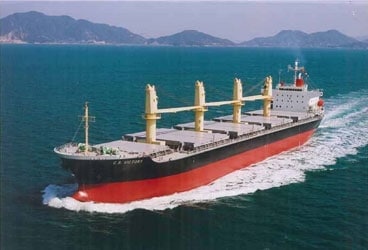
SRRescue368
A 43-year-old sailor from Wailuku, Hawai’i, was rescued last month, after his 30-foot trimaran began taking on water 230 miles off the coast of Maui. The sailor notified U.S. Coast Guard rescue coordinators and activated his EPIRB after the starboard bow broke off, and the center hull began taking on water as the result of a puncture.
The Automated Mutual Assistance Vessel Rescue System, which celebrates 50 years of operation in 2008, played a crucial role in helping save the man. Amver is a global, computer-based, ship-reporting system sponsored by the U.S. Coast Guard. The voluntary program is used worldwide by search-and-rescue authorities to arrange assistance for people in distress at sea.
Citing privacy rules, the Coast Guard doesn’t release survivors’ names, but it reports that the Amver-participating merchant ship CS Victory took the uninjured sailor to its next port of call, Japan, where U.S. Embassy personnel assisted his return to Hawai’i.
The majority of vessels in the Amver program are commercial ships, but private vessels, both power and sail, may also participate. “As long as a boat is capable of rescuing a person, they’re eligible,” says Benjamin Strong, director of marketing for Amver.
In a multi-agency response, the Coast Guard diverted a U.S. Navy P-3 Orion along with the U.S.C.G. Cutter Galveston to assist the sailor on the trimaran. But it was the 585-foot, Panamanian-flagged Victory that arrived on scene first and rescued him within six hours of the initial notification.
The advancement of technology has certainly changed the way Amver operates since its inception in 1957. “In the beginning, the program was limited to the North Atlantic,” says Strong. “And participating vessels used to communicate by sending Morse code. But now we’ve expanded worldwide, and everything is done by e-mail.”
The Amver system rescued 333 lives in 2006 and 450 people were saved in 2007. “By far, the best way for boaters in distress to notify authorities of their position is by activating their EPIRB,” says Benjamin. “And make sure it’s registered before you leave.”
With Amver, rescue coordinators can identify participating ships in the area of distress and divert the best-suited boat or boats to respond. Prior to sailing, participating vessels send a sail plan to the Amver computer center. Vessels then report every 48 hours until arriving at their port of call. On any given day, there are more than 3,200 ships available to carry out search-and-rescue services.
For more information, visit the AMVER website (www.amver.com).







